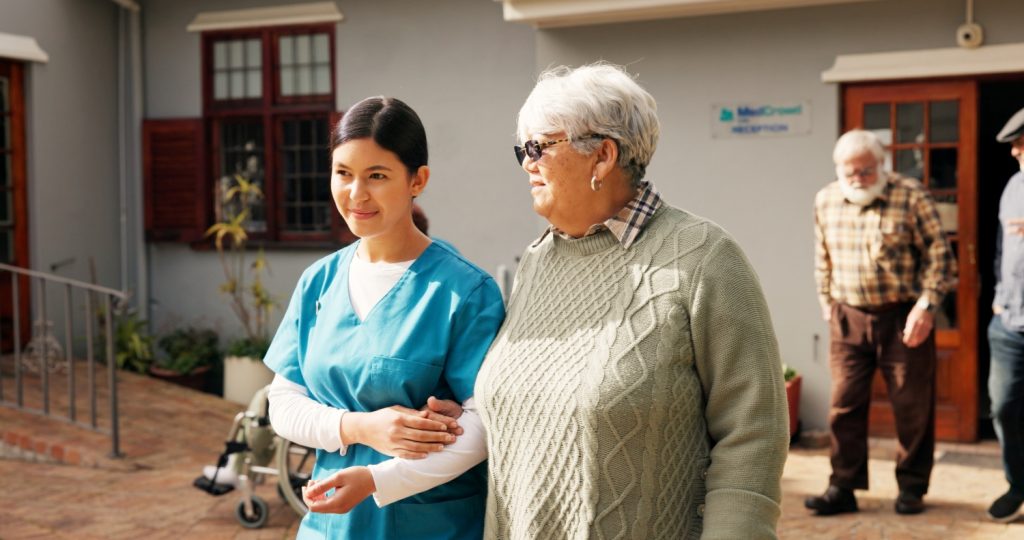The use of incretin-based therapies for diabetes and weight management has continued to climb. This class of medications—also commonly referred to as obesity medications or glucagon-like peptide 1 receptor agonists (GLP-1 RAs)—are effective for glucose control and weight reduction. However, special attention should be paid to the unique nutrition needs of older adults using these medications because aging can impact feelings of hunger, taste perception, nutrient absorption, and food access.
How Do GLP-1s Affect Diet?
Research is evolving on how GLP1-RAs impact what people eat. A recent research review found just 10 studies on the nutrition intake of individuals using GLP-1 RAs. While the studies did not focus on older adults (average participant age across studies was 42–63 years), the results can still be informative. Those using GLP-1 RAs ate 16%–39% fewer calories compared to placebo, but few of the studies reported on diet quality with reduced intake.
Of particular concern is that with fewer calories people may not be getting enough protein and micronutrients. For example when a 30% calorie reduction was modeled using data from the National Health and Nutrition Examination Survey, it was shown that 25%–40% of individuals would have had intakes below the estimated average requirement for protein, vitamin B6 and zinc. Adequate calcium, vitamin A, and magnesium intakes would also have been more difficult to achieve with calorie reduction. Therefore, if older adults use GLP-1s or restrict their calories for weight loss, they need to focus on eating nutrient-dense foods, to ensure adequate protein, vitamins, minerals, fiber and fluids.
Essential Role of Registered Dietitian Nutritionists (RDNs)
In the research review summarized above, only 1 of the 10 studies described in detail the dietary guidance given to study participants and just 2 studies specified an RDN was involved in the study. Access to an RDN can be a key strategy for optimal nutrition because of the substantial changes in dietary intake that may occur with medications and aging. RDN students receive training on medical nutrition therapy for individuals with overweight and obesity.
‘During weight loss, both fat mass and muscle mass are reduced.’
Practicing RDNs can chose to specialize in obesity medicine and pursue the Certification in Obesity and Weight Management (CSOWM) credential. Unfortunately, emerging evidence presented at ObesityWeek found that only 8% of patients saw a RDN within 180 days of starting a GLP-1 RA medication. To encourage better national access to RDN support, the Medical Nutrition Therapy (MNT) Act and Treat and Reduce Obesity Act (TROA) have been proposed. These are important steps toward providing proactive nutrition support to older adults and those with chronic diseases, including obesity.
The Academy of Nutrition and Dietetics has identified key nutrition components for counseling individuals using GLP-1 RAs for weight loss. Four components that may be especially important for older adults include:
- Assess diet for nutrition adequacy and signs of micronutrient deficiencies.
- Recommend a minimum of 64 fluid oz. of water daily.
- Recommend a minimum of 14 grams of fiber per 1,000 calories. For a person consuming 1,500 calories per day, this would equate to 21 grams of fiber. Rich sources include legumes, vegetables, whole grains, and fruit.
- Encourage a minimum of 60 grams of protein per day distributed throughout meals. Protein intake may be facilitated by consuming foods (i.e., lean meats, poultry, eggs, legumes) and oral nutrition supplements with high-quality protein as needed.
Why the Focus on Protein?
During weight loss, both fat mass and muscle mass are reduced. This occurs to varying degrees regardless of how the weight loss is achieved. For example, for those using GLP-1 RAs, 25%–39% of the total weight lost may be from fat-free mass, which includes the bone and muscle. Older adults may be especially susceptible to loss of muscle. This influences their functionality because muscle has important structural as well as metabolic roles. Therefore, clinicians are beginning to proactively monitor muscle function in individuals who are pursuing weight loss and recommend physical activity and nutrition interventions to support muscle health.
Ways to monitor muscle health include routine measurement of hand grip strength, calf circumference, and body composition via bioelectrical impedance or dual-energy X-ray absorptiometry. The Academy of Nutrition and Dietetics and the American Society for Parenteral and Enteral Nutrition Indicators to Diagnose Malnutrition (AAIM) are also a core tool to identify those at nutrition risk who may require intervention.
In summary, clinicians may support muscle health in older adults pursuing weight loss by:
- Proactively discussing physical activity recommendations
- Emphasizing diet quality with a focus on high-quality protein
- Monitoring for changes in muscle health or physical function to facilitate early intervention in at-risk individuals.
Katie Robinson, PhD, MPH, RDN, is the medical science liaison manager for the Nutrition Division of Abbott in Columbus, Ohio.
Photo credit: Timolina













